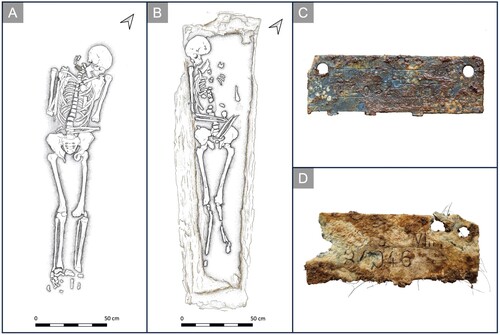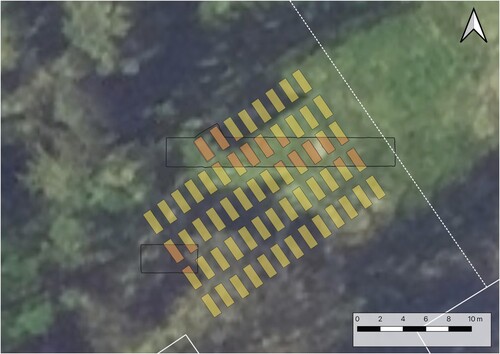Figures & data
Figure 1. Location of Łambinowice in A) the map of Europe, B) Poland, and C) local area (prepared by K. Karski).
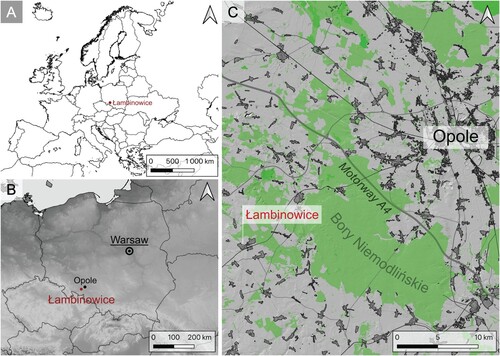
Figure 2. Documentation concerning burials of Italian soldiers in the PoW cemetery in Lamsdorf. A) Information concerning Luigi Norcia and B) information concerning Giovanni Paravidino (source: the Central Museum of Prisoners of War).
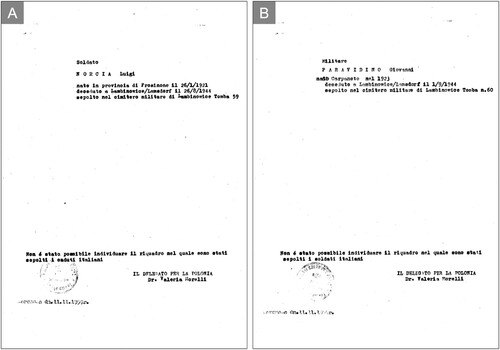
Figure 3. Contemporary plan of the PoW cemetery in Łambinowice (source: The Central Museum of Prisoners of War).
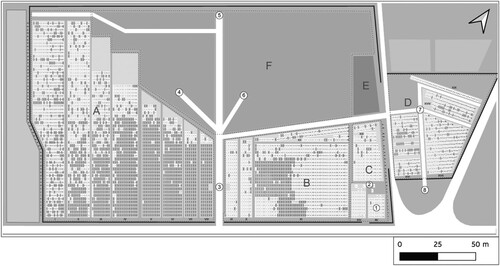
Figure 4. Contemporary state of preservation of the PoW cemetery in Łambinowice. A) The monument dedicated to Serbian PoWs who died in Lamsdorf during the Great War and B) the quarters with graves from the Great War (author D. Frymark; source: The Central Museum of Prisoners of War).
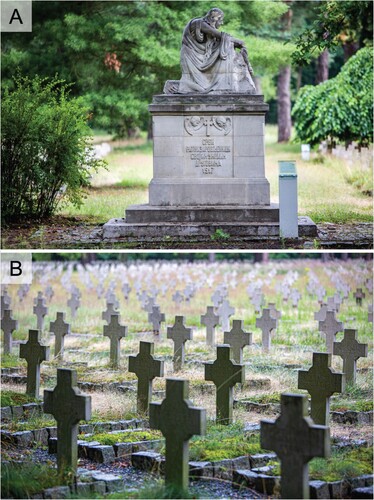
Figure 5. Campscape of Stalag VIII B (344) Lamsdorf. A) A general view of the camp in October 1944 with location of the camp cemetery marked; B) a fragment of a photo taken in October 1944 documenting the camp cemetery—the arrow indicates the Italian quarters; and, C) a fragment of a photo from July 1944 documenting the camp cemetery—the arrow indicates the Italian quarters. Based on vegetation marks and their number and the date of the photo, it was assumed that the registered place was the quarters of the Italian soldiers who died at the end of the Second World War in Stalag VIII B (344) Lamsdorf (prepared by K. Karski; source: The National Archives and Records Administration).
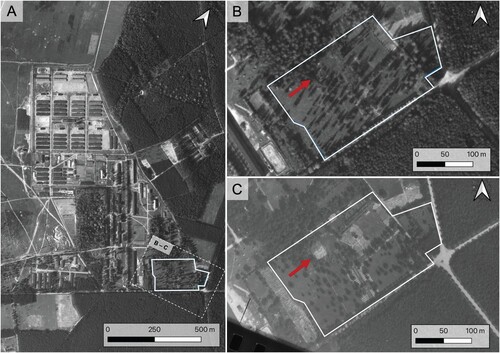
Table 1. Photos obtained and analyzed for the purpose of the project (prepared by M. Michalski).
Figure 6. Interpretation of the results of GPR survey in the PoW cemetery in Łambinowice. A) GPR survey time slice grayscale visualization (0–50 cm); B) contrast enhanced visualization with superimposed plan of graves located through excavation; and, C) mapping of shallow GPR anomalies with superimposed plan of graves located through excavation (prepared by P. Wroniecki; source: The Central Museum of Prisoners of War).
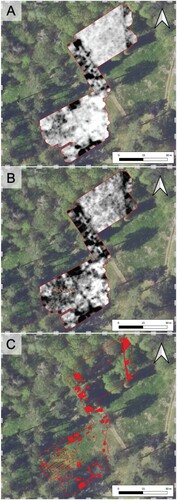
Figure 7. General plan of excavations carried out in 2023 at the PoW cemetery in Łambinowice. A) Plan of the cemetery divided into individual sectors marking the place of excavations on the orthophoto map (prepared by K. Karski and A. Lokś); B) plan of the cemetery divided into individual sectors marking the place of excavations on the airborne laser scanning visualization; and, C) location of the trenches on the orthophoto map (source: Head Office of Geodesy and Cartography, Poland, The Central Museum of Prisoners of War).
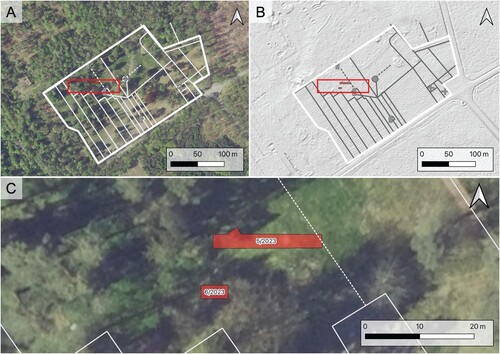
Figure 8. Trench no. 5/2023. A) Interpretation of the results and B) orthophoto map (prepared by K. Karski and A. Lokś; source: The Central Museum of Prisoners of War).
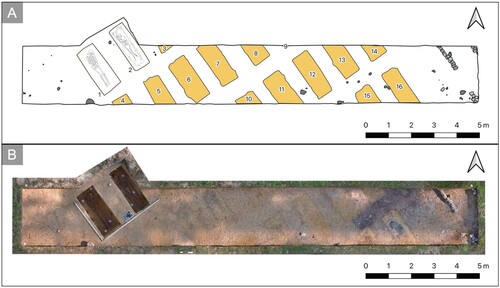
Figure 9. Trench no 6/2023. A) Interpretation of the results and B) orthophoto map (prepared by K. Karski and A. Lokś; source: The Central Museum of Prisoners of War).
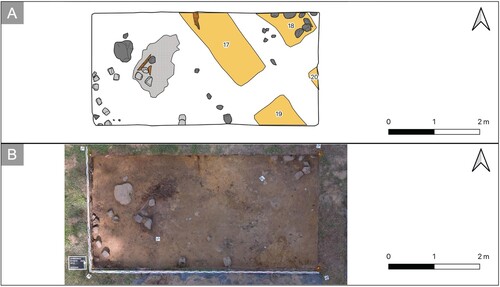
Figure 10. An example of documentation of field research—trench no. 5/2023 (author D. Frymark; source: the Central Museum of Prisoners of War).
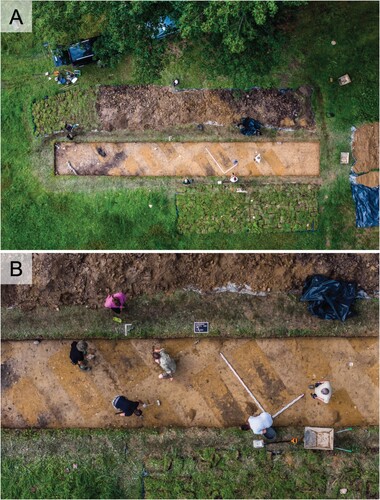
Figure 11. Documentation of A) burial site no. 1 and B) burial site no. 2 and photographs of PoWs’ tags: C) the one found in grave no. 1—number 1064, belonging to Giovanni Paravidono and D) the one found in grave no. 2—number 84086, belonging to Luigi Norcia (prepared by K. Karski, Rewers, and D. Frymark; source: The Central Museum of Prisoners of War).
